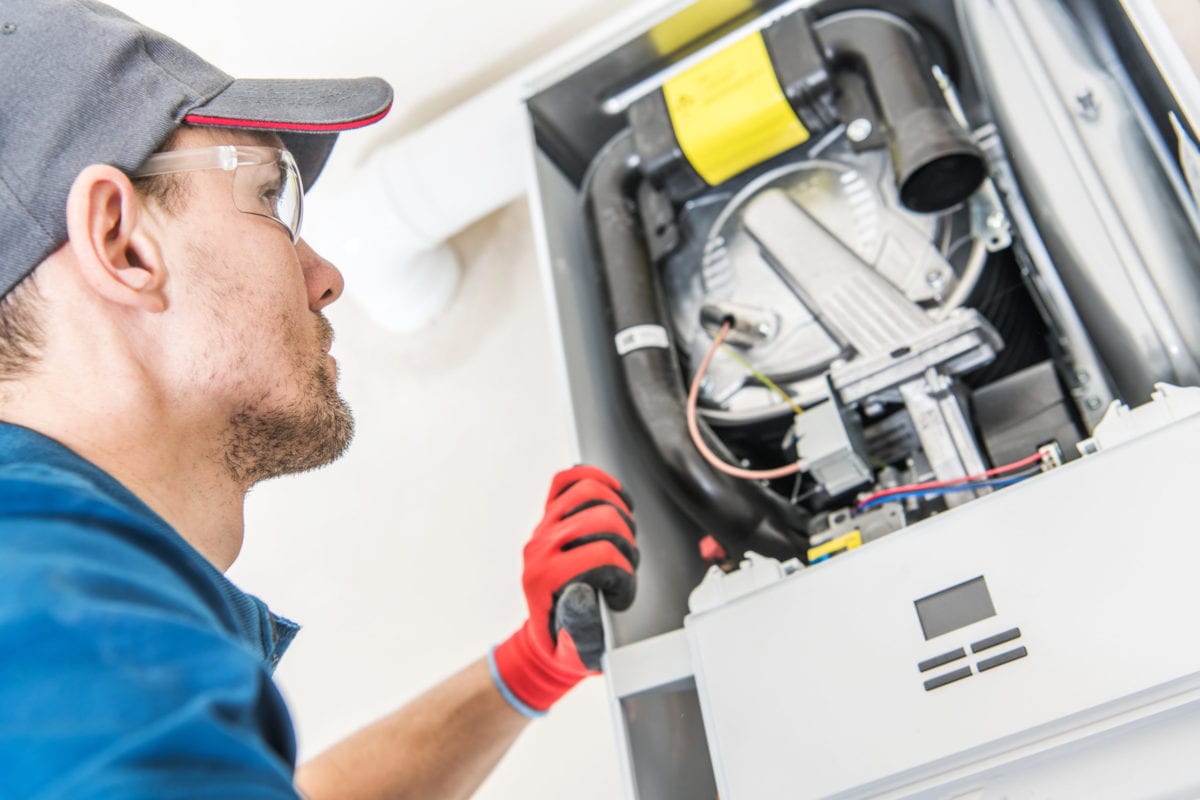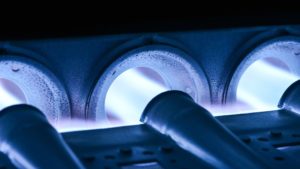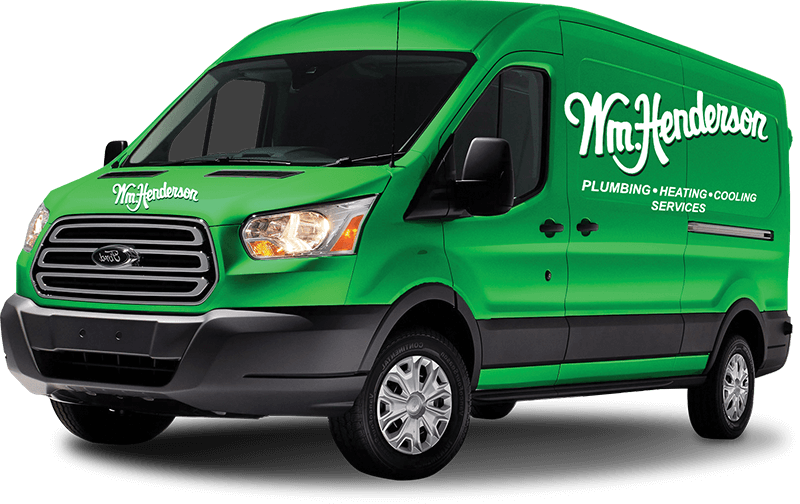
Prior to replacing the gas furnace in your house, it’s important to be familiar with the types of furnaces for sale on the market. If you’re shopping for a new heating system, you will be required to invest in either a standard gas furnace or a high-efficiency condensing furnace. Since condensing furnaces are more efficient, they feature higher Annual Fuel Utilization Efficiency (AFUE) ratings of up to 98 percent. If you’re unfamiliar with gas furnaces, we’ve got you covered with detailed explanations on how to shop for a high-efficiency furnace.
Standard vs High-Efficiency Condensing Furnaces
While there may be many types of gas furnaces for sale, they all share various commonalities. They all include air filters that are designed to prevent dirt and dust from entering your home. In addition, all types of high-efficiency gas furnaces feature gas burners and electronic ignition systems that are engineered to produce warm air.
How a Standard Gas Furnace Operates
A standard gas furnace includes a metal pipe system that is designed to transmit the warm exhaust gases from the combustion chamber and gas burners to the outdoors. This chamber is located inside of the primary heat exchanger of a gas furnace.
The heat exchanger is a component that is designed to adjust the temperature of the incoming air supply in a gas furnace. Since a standard gas furnace pushes the hot gases produced during the combustion process outside the house, a large supply of heat energy is wasted.
How a High-Efficiency Condensing Gas Furnace Operates
While traditional gas furnaces only include a primary heat exchanger, high-efficiency condensing gas furnaces feature a secondary heat exchanger. The secondary exchanger is a component that is engineered to remove and reuse heat energy from the combustion gasses to ensure they are not wasted.
Condensing gas furnaces are a popular option since they offer superior air distribution and lower monthly utility bills. In addition, various types of high-efficiency condensing gas furnaces include variable-speed motors that are engineered to adjust the flow of air to align with the real-time heating requirements of your house.
Tips & Insights: Top Reasons Your Furnace Is Not Igniting
 What is a Heat Exchanger?
What is a Heat Exchanger?
Both standard and high-efficiency condensing gas furnaces include a component called a primary heat exchanger. A heat exchanger is a collection of tubes that acts as a barrier between incoming air and the combustion gases in a furnace.
The fan in a traditional and high-efficiency gas furnace is designed to push the air supply across the exterior of the heat exchangers to ensure the heat is successfully transferred. Once the heat from the exchangers is absorbed by the air, the furnace blower motor pushes the warm air throughout your home.
What is an AFUE Rating?
AFUE stands for Annual Fuel Utilization Efficiency. This is an efficiency rating that is designed to measure the total supply of warm air provided to a home in contrast with the amount of gas that was utilized by a furnace throughout the combustion process. For example, a furnace with a 70% AFUE rating will transform 70% of the gas supply to wam air. The other 30% of the gas is lost throughout the standard heating process.
Furnaces that were manufactured 40 to 50 years ago featured an average AFUE rating of 60 percent. On the other hand, the latest gas furnaces for sale include AFUE efficiency ratings of up to 97%. Current regulations from the United States Government require new furnaces to have a 78% or higher AFUE rating. Gas furnaces with lower AFUE scores are no longer able to be legally installed in residential settings.
 Install a Heat Recovery Ventilator (HRV) With a New High-Efficiency Condensing Furnace
Install a Heat Recovery Ventilator (HRV) With a New High-Efficiency Condensing Furnace
Both traditional and condensing gas high-efficiency furnaces rely on recycled air from a return ventilation system to provide heat to homes. The furnace will utilize its air filter to purify and heat the incoming air supply. While the heat recycling process is able to successfully keep your home comfortable, it is not able to provide a supply of fresh air from the outdoors.
The latest high-efficiency condensing gas furnaces on the market are compatible with outdoor air intake systems. The air intake component is able to collect fresh air from outside the house to push into the furnace. Outdoor air intake systems are able to be integrated with heat recovery ventilators (HRV) to supply fresh air throughout the home.
An HRV is a component that utilizes the home air supply to pre-heat air from outside the home prior to pushing it to the gas furnace. If you need assistance installing an HRV system to your gas furnace, give our team a call by phone at (484) 206-8594 or schedule an appointment online. We offer gas furnace repair and installation services to areas of Pennsylvania such as West Chester, Conshohocken, Coatesville, and Broomall.
Tips & Insights: 7 Benefits Of Buying a Heat Pump For Your Home
A More Efficient Fuel Combustion Process
Condensing and standard gas furnaces share similar parts and equipment such as burners and combustion chambers. However, a condensing heating system is able to process and utilize gas in a more efficient manner that is better for the environment. While a conventional furnace includes a gas valve that is able to activate and deactivate the burners, a condensing high-efficiency gas furnace features a dual-stage valve that is engineered to modify the incoming gas supply based on the heating requirements of the home.
The gas burners in high-efficiency condensing furnaces are able to be set to a maximum and minimum setting. This allows for greater control of the heat supply throughout the home. This type of furnace also includes an electronic control system that is engineered to control the gas burners and heat supply. Since the motor speed and gas supply are able to be controlled on high-efficiency furnaces, this enhances the temperature and comfort of your home.
What is an Energy Star Rating?
Energy Star is a program from the Environmental Protection Agency that is designed to protect our climate. This program promotes products and hardware that are engineered to be efficient. An Energy Star rating is able to be applied to hardware, appliances, and homes to give consumers an idea about the efficiency of their assets.
To earn an Energy Star rating, a product is required to utilize less energy when compared to other equipment for sale on the market. Since a high-efficiency furnace with an Energy Star rating use less energy, you will save money on your monthly utility bills. In addition, condensing furnaces are engineered to protect the environment by producing fewer consequential emissions from manufacturing facilities.
 Heating Repair, Replacement, & Tune Up Services
Heating Repair, Replacement, & Tune Up Services
Our team offers trustworthy heating repair services for high-efficiency gas furnaces in areas of Pennsylvania such as Broomall, Conshohocken, West Chester, and Coatesville. Give us a call by phone at (484) 206-8594 to receive help with a heating project.
From furnaces, boilers, ductless mini-split systems, to heat pumps, our team is able to provide dependable maintenance and installation services for all types of HVAC systems. Residents in Pennsylvania depend on WM Henderson because of its organized staff, communication skills, and innovative equipment.
Tips & Insights: 4 Reasons Your Furnace Is Producing a Buzzing Noise

